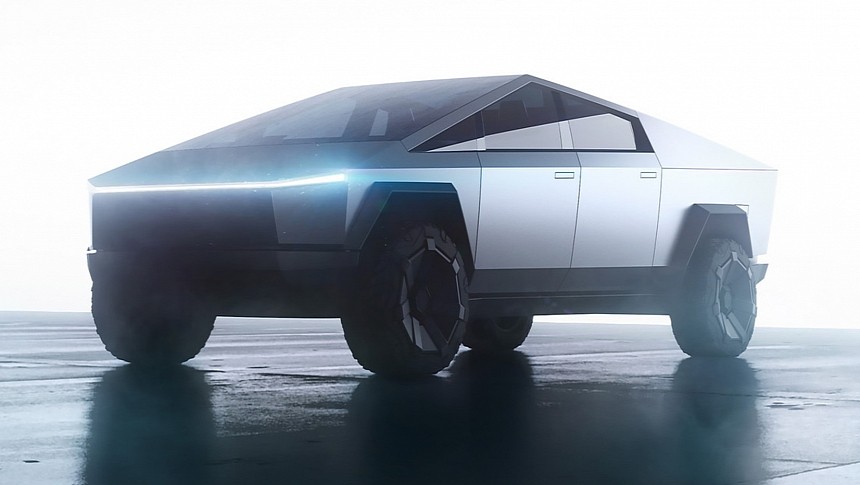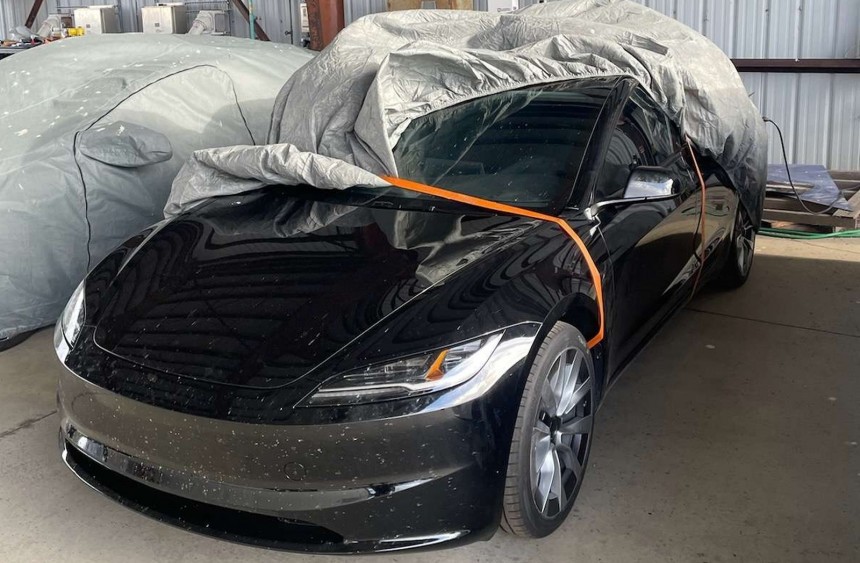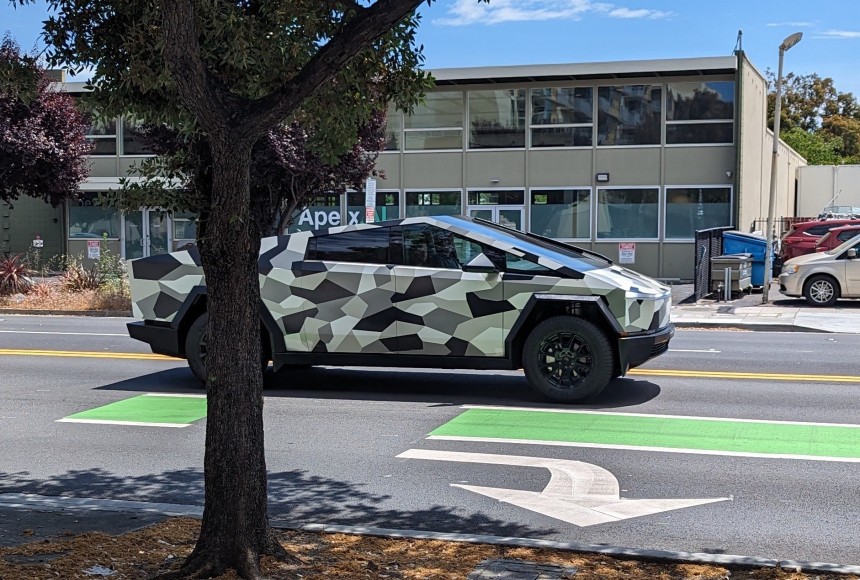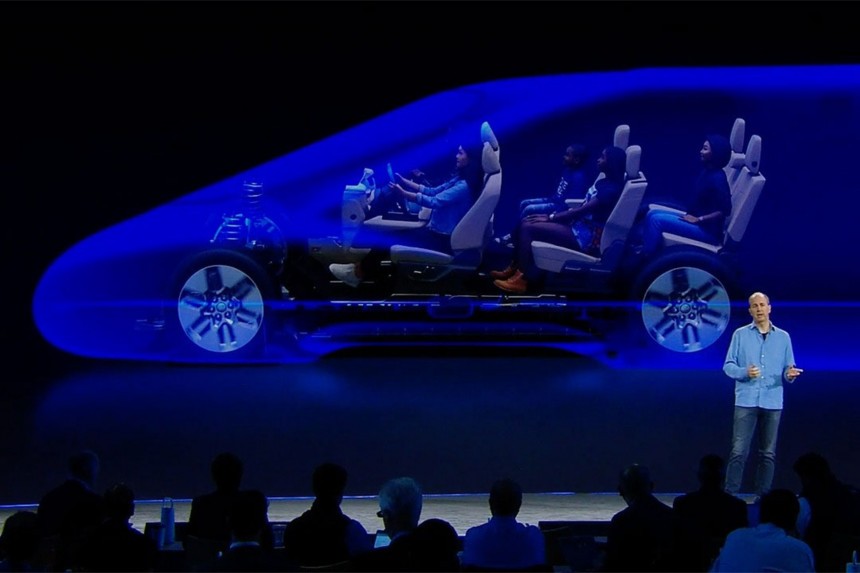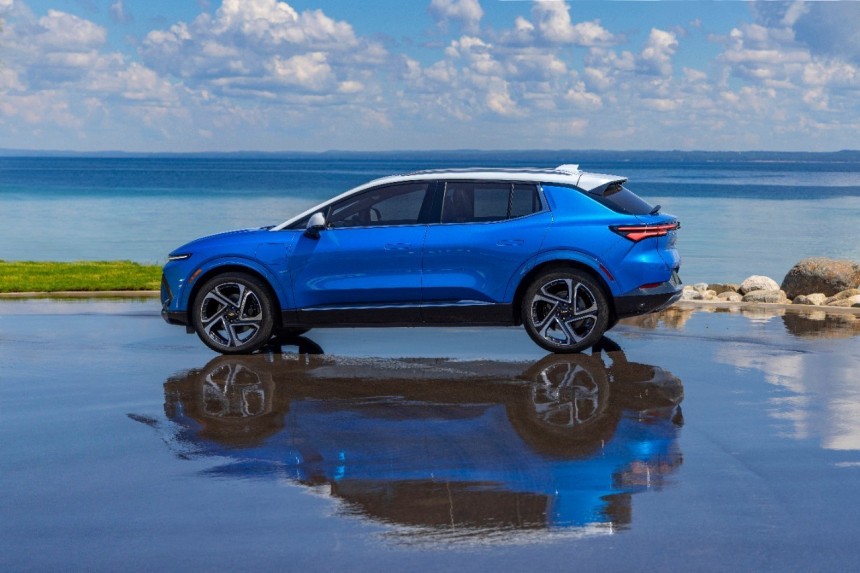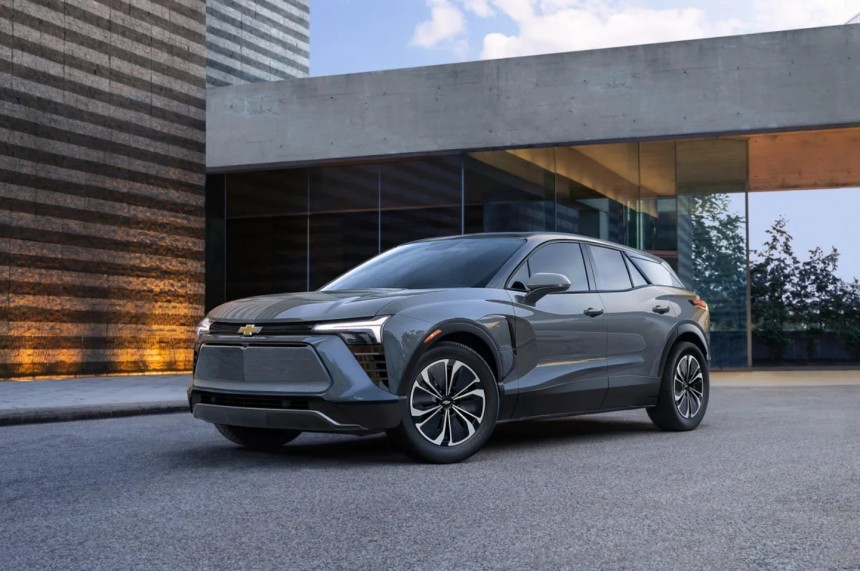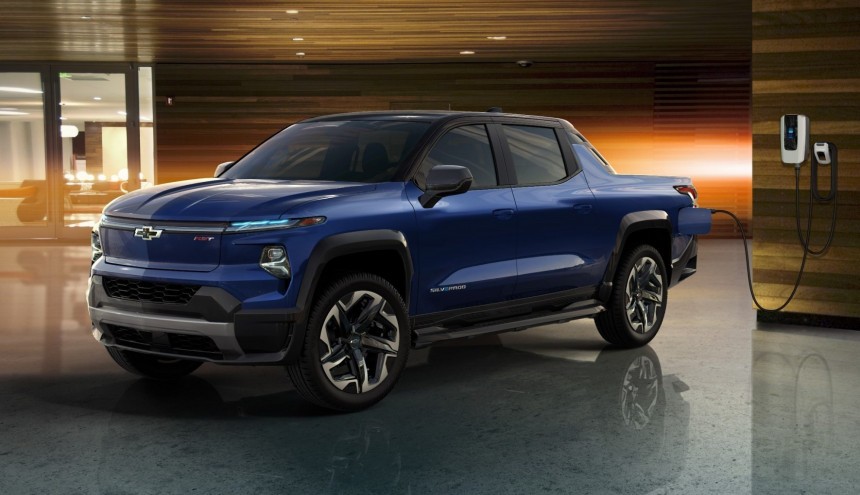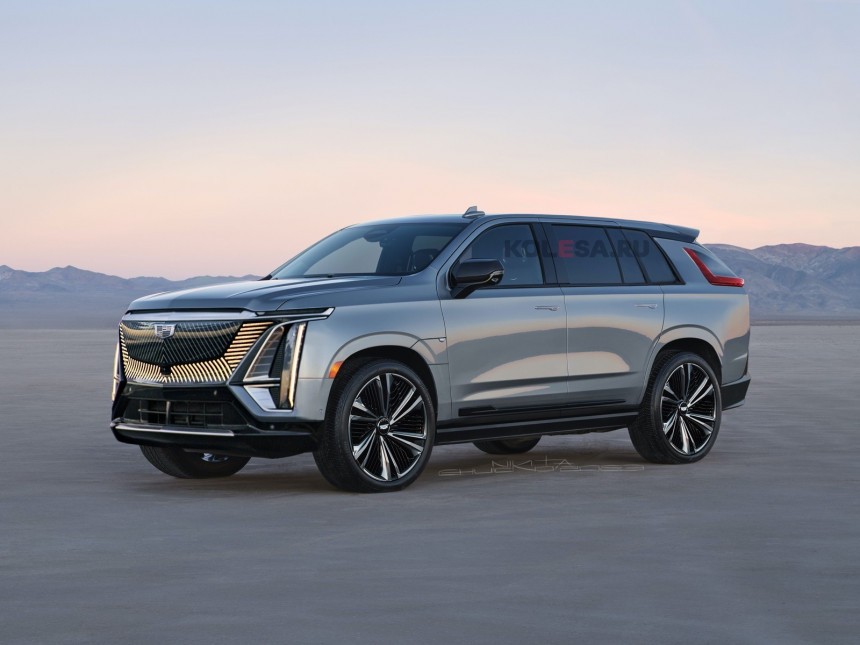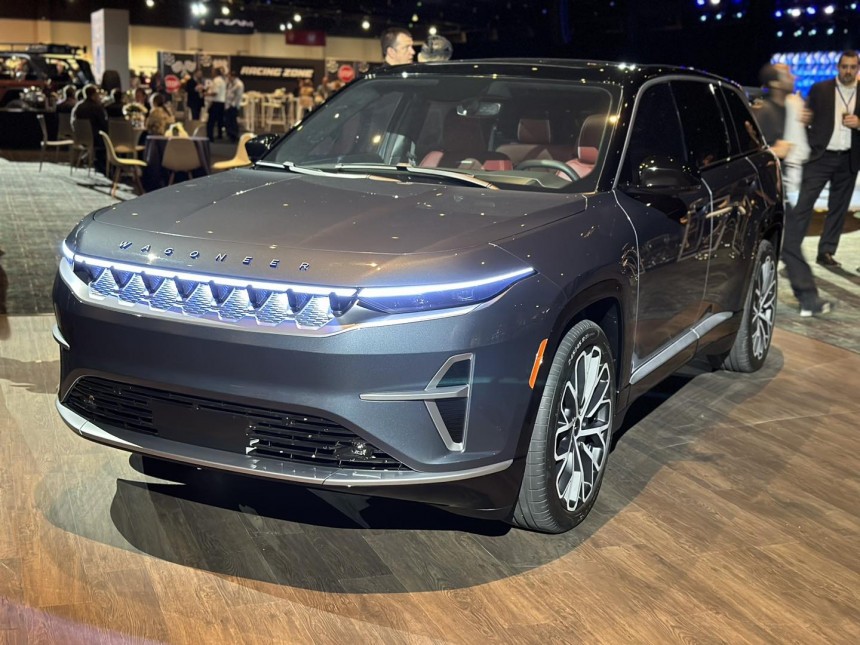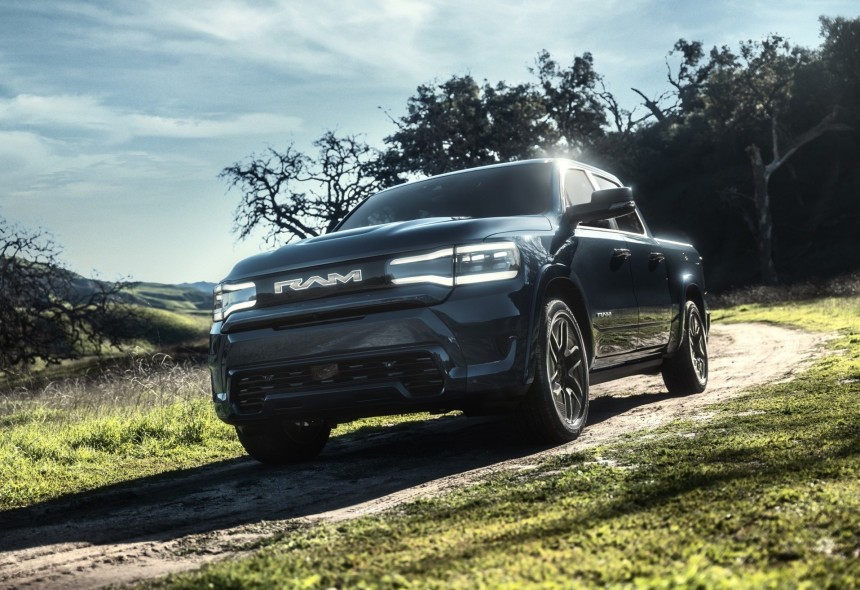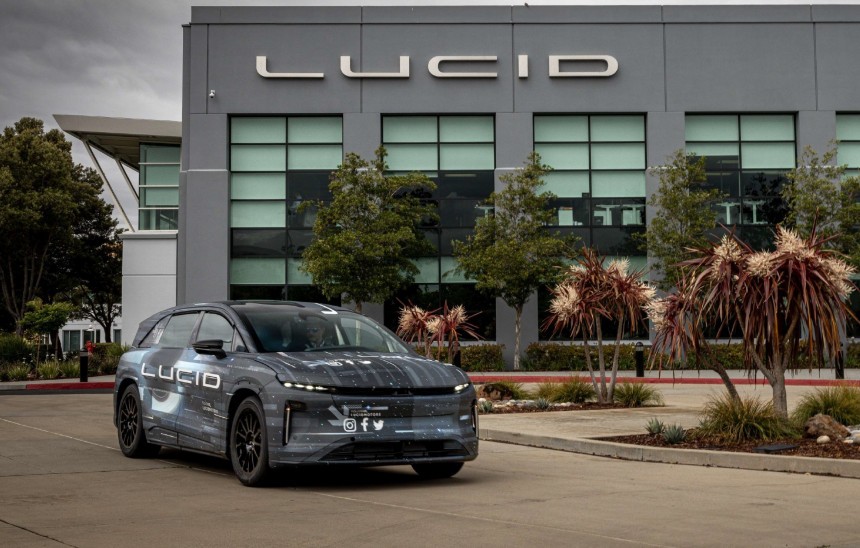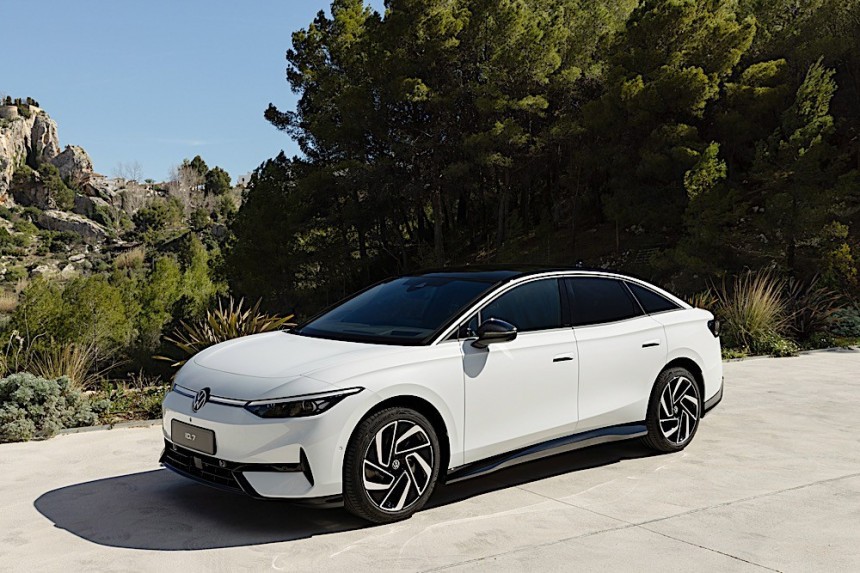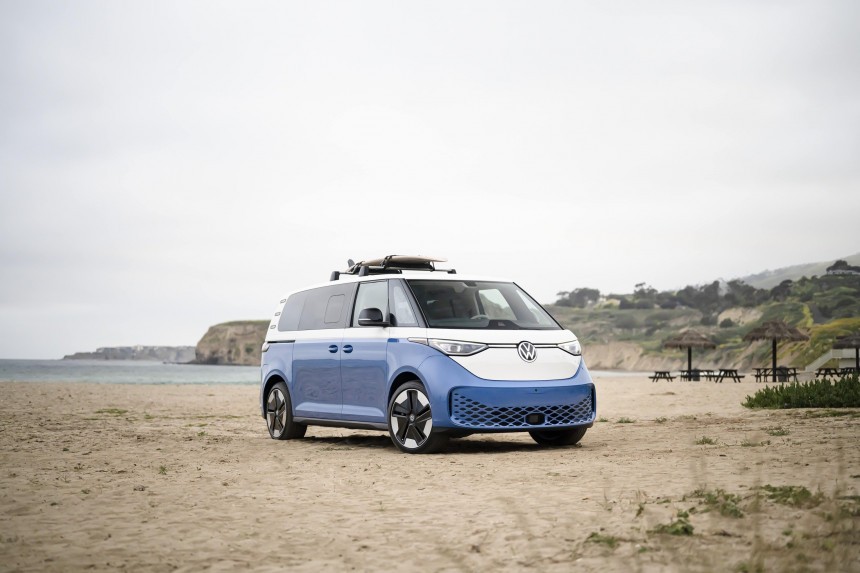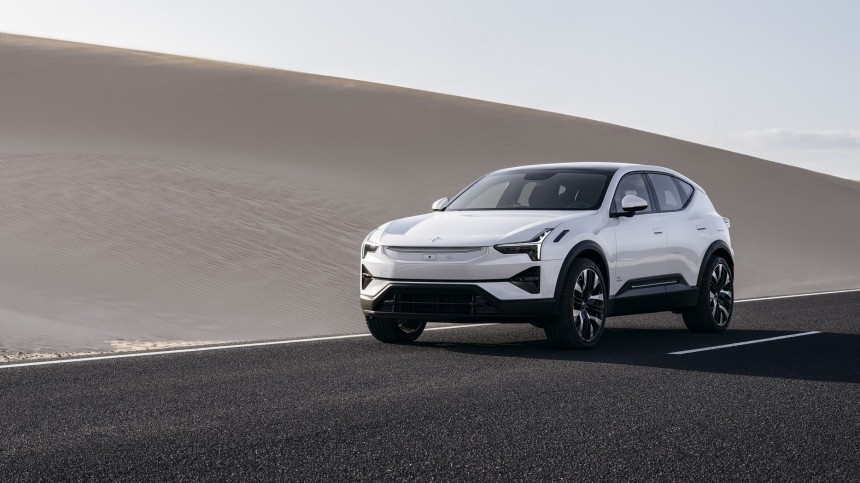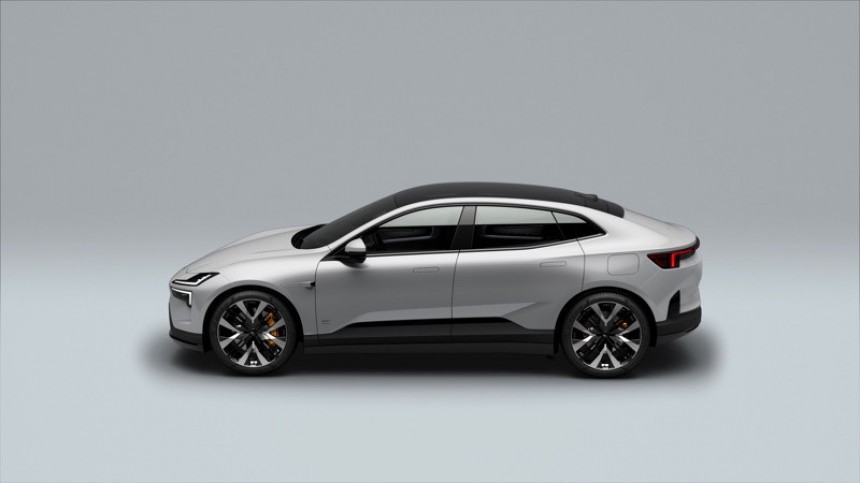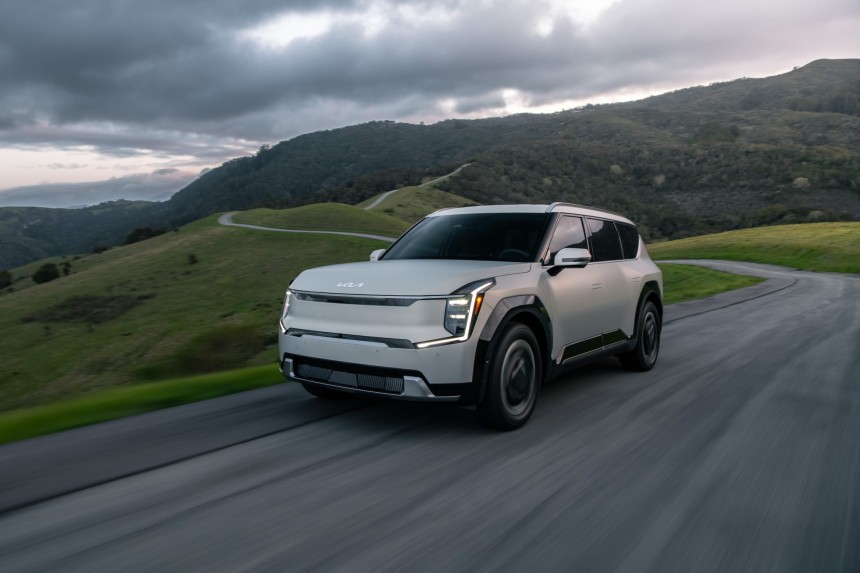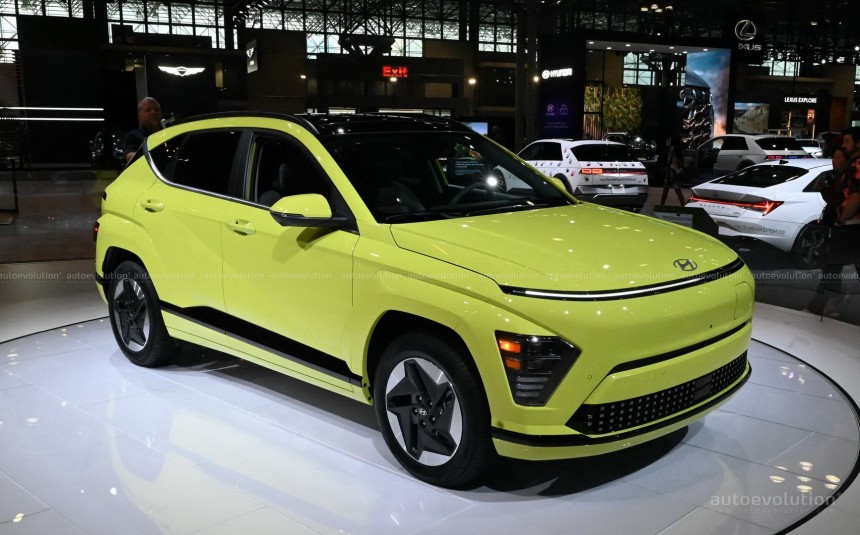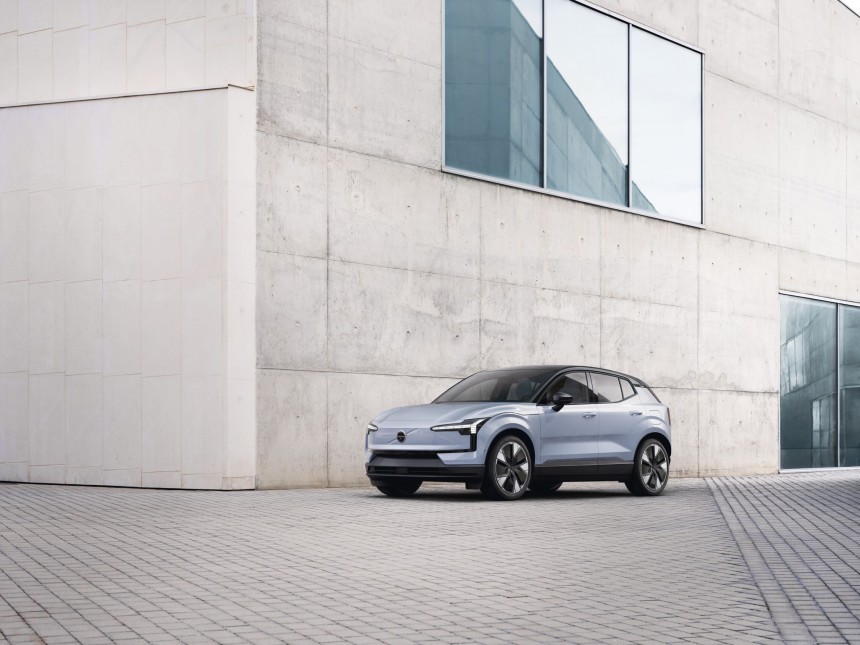Electric vehicles entered the mainstream as people rushed to join the craze, and carmakers obliged. With so many exciting EV models in the pipeline, it might be worth waiting a bit longer before pulling the trigger on a new electric vehicle if you're in the market for one. Here are the most anticipated EV launches of the next couple of years that are worth waiting for.
As electric vehicles gain more acceptance in the US market, traditional carmakers are torn between two contradictory strategies. On the one hand, their ICE business is booming at a time when developing their first electric vehicles is swallowing unfathomable amounts of cash. It's so tempting to take the easy way. On the other hand, combustion vehicle sales are on a downward trend, which is poised to accelerate in the coming years. Postponing their EV programs is risky because, at one time, they won't find many buyers for their gas-powered vehicles.
That's why GM, for instance, announced a flurry of EV models, although it only produced very few of those launched last year. It's worth establishing the supply chains, securing the raw materials, and working on new vehicle development, but selling EVs now is costly. All traditional carmakers reported losing money on their EV business. This is normal, considering they have to develop not only new models and new technologies but new business relations, too, and access the raw-material supplies all the way to the mine.
Despite these struggles, the future is electric, and the tides cannot be turned. That's why everyone is in overdrive designing, testing, and launching new EV models in the coming years. While writing this story, even I was surprised by how many new models are planned to launch by the end of 2024. And they're not just compliance EVs, they're actually quite good, at least on paper. Good enough that, in some cases, it's worth postponing the purchase until they arrive. Without further ado, let's see what carmakers have in store by the end of next year.
Range: 300-350 miles
Price: from $40,000
IRA tax credit: Yes
After six years on the market, Tesla will finally update its base model. This sounds like the usual development cycle of the car industry, but Tesla is not playing by the rules. The refreshed Model 3 is both new and old. I'm sure critics will consider it a mild facelift, nothing to phone home about, while fans will hail it as the most revolutionary vehicle ever to roam the roads. I suggest we keep our distance from both groups and see why it's worth waiting for the new Model 3.
For once, Tesla will try to optimize production and cut costs where it can, and that includes cutting on some nice features. The new model will drop the steering wheel stalks, adopting the trend from Model S and Model X. New features are also expected, and I know ventilated seats, ambient lighting, and an upgraded audio system will debut on the refreshed Model 3 this fall. I expect a $40,000 price or below, and the Model 3 will also qualify for the full IRA tax credit, making it a sweet deal.
The new model will adopt front and rear megacastings and a structural battery pack, reducing weight and boosting efficiency. This means the Tesla Model 3 will go further on a charge with a smaller battery pack. Rumor has it that Tesla will use Lithium-Manganese-Iron-Phosphate (LMFP ) battery cells in the RWD base trim. Tesla will target a 300-mile (480-km) range for the base version, as Elon Musk said this is the sweet spot in the EV market these days.
Range: 250-500 miles
Price: from $60,000
IRA tax credit: Yes
Arguably the most anticipated EV model this year, Tesla Cybertruck was until recently considered one of the most important vehicles in Tesla's lineup. Elon Musk tempered expectations, saying that the Cybertruck would not significantly influence Tesla's financial results. When it was introduced in 2019, the Cybertruck had a price tag of $39,900, but things have become much more expensive. Musk warned that the new production process is not cheap and the production costs would be high.
This is why I listed the expected price as 50% higher, but nobody knows how much the Cybertruck will cost. Rumor has it that Tesla will drop the single-motor variant, which I think is a smart move. Tesla received over one million reservations for the truck and has no reason to cripple it to make it more affordable. For those paying the price, the Cybertruck will come with an exoskeleton and stainless steel body, both unique features in the industry.
The Cybertruck will also debut the 48-volt electrical system set to become the new norm at Tesla. The EV maker raised expectations to the stratosphere with its upcoming electric pickup, promising rear-wheel steering, armored glass, and even the ability to float, serving "briefly" as a boat, as Elon Musk announced last year. Production capacity is planned to reach 375,000 units per year, but the 4680 cell availability will be a significant bottleneck, at least in the early stages.
Range: from 260-350 miles
Price: unknown
IRA tax credit: Yes
Ford is planning a three-row electric SUV that might or might not be named Explorer EV. Remember, the Blue Oval launched the MEB-based compact EV with the same name in Europe and will probably not want the same nameplate used on a mid-size SUV. Whatever the moniker, the new Explorer-sized EV will be built in Canada at Ford's Oakville, Ontario, plant.
During a Capital Markets Day event in May, Ford announced that its upcoming three-row SUV would have a spacious cabin and up to 350 miles (560 km) of range, or 300 miles when cruising at 75 mph (120 kph). The planned battery capacity will be around 100 kWh, and the fast-charging capability will allow it to recover 150 miles (240 km) of range in less than 10 minutes.
The mid-size electric SUV will be built on the same GE2.1 EV architecture as the second-generation Mustang Mach-E and Mustang Mach-E Coupe. There aren't many technical details about the upcoming Ford SUV, but I expect it to borrow something from the F-150 Lightning shelf. In this case, expect around 450 horsepower in a dual-motor configuration and a range estimate of at least 260 miles (420 km).
Range: 250-300 miles
Price: from $30,000
IRA tax credit: Yes
Chevrolet Equinox EV was announced as the most affordable electric vehicle in GM's stable, taking over from the Chevy Bolt EV/EUV when it will be retired at the end of this year. GM sent mixed signals about the $30,000 projected starting price, as CEO Mary Barra said it's impossible to make profitable EVs in the $30,000-$40,000 price range.
The sales will start with the 2RS trim, which will be much more expensive than the 1LT base version. Five trims will be offered, with the most luxurious being the 3RS. The Equinox EV will be available with 210 horsepower in the standard FWD specification, while the eAWD models turn it up a notch to 290 horsepower. Like all other EVs from GM except the Bolt, the Equinox EV uses the Ultium EV platform.
The battery capacity has not been revealed, but I expect the Equinox EV to use the 100-kWh pack of the Cadillac Lyriq. This allows the luxury crossover to travel up to 300 miles on a charge, which is also the Equinox EV's target. A smaller pack will certainly be offered for lesser trims, hence the 250-mile range prediction.
Range: 247-320 miles
Price: from $47,595
IRA tax credit: Yes
GM has one of the most ambitious EV programs, which explains why so many models are in the pipeline. The Chevy Blazer EV shares many characteristics with its smaller brother, the Equinox EV. Still, it is large enough to compete in the mid-size SUV segment, unlike the compact Equinox EV. Chevrolet hasn't offered many details, but I estimate the basic configuration to mirror the Equinox EV.
The Chevrolet Blazer EV will add a sportier, 557-horsepower SS variant to the mix, capable of hitting 60 mph (97 kph) in less than four seconds. This version will sell first, as people have already seen it at the 2022 Detroit Auto Show. Chevrolet also announced a police-ready Blazer PPV based on the SS trim with some worthy upgrades.
The base 1LT trim will be offered exclusively in an FWD configuration, while the 2LT can be bought as both FWD and AWD. Interestingly, RS trims will also be available with an RWD setup. Chevrolet promises the Blazer EV can recoup about 80 miles (130 km) in 10 minutes of charging when hooked to a DC fast charger.
Range: 350-450 miles
Price: from $41,595
IRA tax credit: Yes
These are two of the most anticipated EV launches this year, and if GM plays its cards right, they might prove more influential than the Tesla Cybertruck. With Ford F-150 Lightning and Rivian R1T already collecting laurels, Chevrolet and GMC trucks must be really good to conquer the buyers' hearts. They will arrive in an already crowded segment, so just showing up would not be enough.
The first to arrive is the Chevrolet Silverado EV in a work truck version, with deliveries planned for this summer. This will offer up to 510 horsepower and has a tow rating of up to 10,000 pounds (4,535 kg). GM also claims the Silverado EV can power a home for up to 21 days when paired with an Ultium Home accessory charger. The luxurious RST version has 664 horsepower, enabling a 0-60-mph (0-97 kph) acceleration in less than 4.5 seconds.
The GMC Sierra EV will arrive next year as a sportier version. With up to 754 horsepower and 400 miles (645 km) of range, the GMC Sierra EV won't be cheap. The price for the Denali Edition 1 trim reaches $107,000, which is in the GMC Hummer EV territory. The good news is that all GM EVs should qualify for the $7,500 IRA tax credit, given GM's massive investments in battery-cell production in the US.
Range: 250-350 miles (estimated)
Price: from $130,000 (estimated
IRA tax credit: Yes
The electric version of the Cadillac Escalade has just been announced as the Escalade IQ, so there are not many details to discuss. Still, I'm fairly certain the full-size luxury SUV and GMC Hummer EV SUV will share more than just the Ultium EV platform. Expect two and three-motor configurations with up to 1,000 horsepower, which is more than the 830 horsepower of the GMC Hummer EV SUV.
The electric Escalade keeps the gargantuan proportions of the ICE model but will have a sleeker design with a more inclined roof line. Cadillac will likely borrow more design cues from the recent Lyriq and Celestiq, aiming to make the SUV as aerodynamically efficient as possible.
The eight-lug wheel design spotted on the prototypes reveals that the Cadillac Escalade IQ will be just as heavy as the GMC Hummer EV SUV. This is owed to the massive 247-kWh Ultium battery, with 213 kWh of usable capacity. If the GMC Hummer EV is any indication, expect a 0-60 time of about 3.5 seconds.
Range: 400-500 miles
Price: Unknown
IRA tax credit: Partial
Stellantis is the last and most reluctant of the Detroit Three to pursue electric vehicles, and it only started setting up the EV supply chain and its own battery factories. The effort takes time, and the 2024 Jeep Recon will be affected. Still, considering that the Jeep Wrangler 4xe and Grand Cherokee 4xe plug-in hybrids get a $3,750 tax credit, I expect the Recon to get it, too.
Stellantis announced the Jeep Recon last September as an off-road electric mid-size SUV. Given its similar size, I can say this is the electric Wrangler, although Jeep might protest later with a pure electric Wrangler. The nameplate is just too important for Stellantis, and I'm sure it will carry on in the EV era.
Stellantis introduced a Recon concept in March, claiming a range of 500 miles (805 km), which seems too much for a boxy off-roader. For comparison, the more streamlined Jeep Wagoneer S, which shares the same STLA Large platform, has a 400-mile (645-km) range.
Range: 400 miles
Price: Unknown
IRA tax credit: Partial
The Jeep Wagoneer S is the second US-bound EV that Stellantis plans on the STLA Large platform. Marketed as a luxury EV, the Wagoneer S will be sportier than the rustic Jeep Recon. Jeep says the Wagoneer S will have up to 600 horsepower in a dual-motor configuration, enough to reach 60 mph in less than 3.5 seconds.
These are the top specifications, but Jeep will likely offer lesser versions of the Wagoneer S, with less power and range. Interestingly, Jeep doesn't intend to kill the ICE Wagoneer but will sell both versions at the same time. A plug-in hybrid 4xe version is also in the cards but will not arrive earlier than 2024.
Sadly, Stellantis didn't offer more technical details about the Jeep Wagoneer S or the Recon. I hope the Franco-Italo-American carmaker will surprise me with its EV offering later this year. Still, knowing how GM tackled electrification (and it wasn't as critical as Stellantis about electric vehicles), I wouldn't hold my breath that the Recon and the Wagoneer S would arrive on time.
Range: over 500 miles
Price: Unknown
IRA tax credit: Partial
Stellantis couldn't resist joining the EV pickup truck fray, and the Ram 1500 REV is their answer to Chevy Silverado/Ford F-150 Lightning/Rivian R1T. Although the name makes you think this is a plug-in hybrid with a range extender, the Ram 1500 REV is a pure EV. That doesn't mean Ram Trucks isn't working on a range-extender variant.
Launched with a bizarre "Premature electrification" campaign, the Ram 1500 REV promised a class-leading range of more than 500 miles (805 km). This is enabled by a mammoth 229-kWh battery, which beats the GMC Hummer EV. With the standard 168-kWh battery pack, the Ram 1500 REV can travel up to 350 miles (560 km) on a charge, which is still impressive. Stellantis boasted about having payload, towing, and charge-time advantages over the competition.
The Ram 1500 EV features two electric motors, with 250 kW of power each, for a total of 654 horsepower. The truck has 14,000 lbs. (6,350 kg) of towing capacity. This beats the Ford F-150 Lightning (10,000 lbs./4,500 kg) and Rivian R1T (11,000 lbs./5,000 kg) but is below the Chevy Silverado EV's towing capacity of 20,000 lbs. (9,000 kg).
Range: over 500 miles
Price: Unknown
IRA tax credit: No
Lucid announced its first electric SUV in 2020, but it took two years until the EV startup revealed more details about the upcoming model. The seven-seat SUV promises exhilarating performance and, just like its little brother, the Air sedan, unprecedented electric range. Lucid Gravity will have more range than any other EV, except Lucid Air, which is a tall order. Depending on the moment it arrives on the market, the Gravity should offer more than 500 miles of range to beat Jeep Recon.
Although Lucid already started testing the Gravity prototypes on public roads, we still don't know anything about the upcoming SUV. Based on what we know so far, the design is rather dull, although beauty usually lies in the eyes of the beholder. The Air is a rather ugly sedan, but I forgive it because it has the most aerodynamically-efficient shape in the automotive industry.
Lucid Gravity's fate largely depends on the startup's ability to ramp up Air production and find customers for its expensive products. Lucid has Saudi Arabia's PIF backing, but it still needs to prove its worth if it wants to survive.
Range: 320 miles (estimated)
Price: $60,000 (estimated)
IRA tax credit: No
Although Volkswagen launched the ID.7 in Europe, the US specs are still under wrap. The German carmaker promised up to 435 miles (700 km) under the more forgiving European testing cycle WLTP. I estimate the EPA range to be around 320 miles (515 km), which is still an impressive figure in today's market.
Although built on the same MEB architecture as the ID.4, the ID.7 has undergone worthy upgrades to make it stand out in the very competitive mid-size sedan segment. The electric Volkswagen will feature more powerful electric motors, although at a maximum of 282 horsepower, it would not scare a Tesla Model S, its most likely competitor.
This should be appropriately reflected in the pricing strategy, with the Volkswagen ID.7 expected to undercut the Tesla Model S by a margin. Still, the MEB architecture is already long in the tooth, and most other brands plan better EVs in the upcoming months. The ID.7 will have a station-wagon variant, probably named ID.7 Space.
Range: 250 miles (estimated)
Price: $60,000 (estimated)
IRA tax credit: No
Volkswagen is already selling the ID. Buzz in Europe, but the Bus successor will only arrive in the US next year in a long-wheelbase variant. The electric Bus will probably be the most successful Volkswagen model in many years, a shout-out to the campervans of the 1980s and 1990s.
Also built on Volkswagen's MEB electric architecture, the ID. Buzz will feature an 85-kWh Li-ion battery and a 282-horsepower motor on the rear axle. The electric van will be no slouch, with a 0-62 mph (0-100 kph) in 7.9 seconds, much faster than any of its predecessors. A sportier GTX trim will add an electric motor on the front axle for a total of 335 horsepower, enough to slash the 0-62 time by 1.5 seconds.
Volkswagen promises a state-of-the-art infotainment system with a 12.9-inch center screen. If the German carmaker sorts its software problems, it should be a delight. Expect the ID. Buzz to also feature everything Volkswagen developed in the safety-assist department.
Range: 200-250 miles (estimated)
Price: unknown
IRA tax credit: No
The second-generation Porsche Macan will be offered exclusively with an electric powertrain, together with its sibling, the Audi Q6 e-tron. The pair might be the most unfortunate models in the Volkswagen Group's history due to the problems with its software arm Cariad. Both models should've been ready for delivery in 2022, but the software was flawed.
Two years late in the market is a lot of time in the EV arena, considering the neck-breaking development pace in the industry. The Macan EV is built on the Premium Platform Electric (PPE) shared with the Audi Q6 e-tron and the upcoming A6 e-tron. The Macan EV and the Q6 e-tron should offer up to 595 horsepower, with a battery capacity of 100 kWh.
The Macan should have a more luxurious cabin and a more advanced chassis setup than its brother with a four-ring badge. The most performance-oriented Macan EV will flaunt an electronic locking differential out back and a front-to-rear weight balance of 48:52.
Range: 375 miles (estimated)
Price: from $83,900
IRA tax credit: No
The Polestar 3 is the sportier and sexier version of the Volvo EX90, both models being planned to start production at Volvo's plant in South Carolina. Although initially slated to begin deliveries this year, both models have been delayed due to software issues. The high-performance luxury crossover will only be available with two rows of seats, unlike the Volvo EX90, which will have up to seven seats.
The 111-kWh battery pack feeds two electric motors with a total power of 483 horsepower. With the optional Performance Pack, this can go up to 510 horsepower, good for a 0-62 mph acceleration in 4.7 seconds. A less powerful version is available with 402 horsepower, also with all-wheel drive.
The Polestar 3 impresses with a drag coefficient of 0.29, which is in the Chevy Corvette C8 territory. The sporty SUV is also lighter than most in its segment, at only 5,697 pounds (2,584 kg). Expect this to contribute to an impressive range, estimated at 375 miles (600 km).
Range: 285 miles (estimated)
Price: unknown
IRA tax credit: No
Although the Polestar 4 looks like a coupe version of the Polestar 3, the company's CEO, Thomas Ingenlath, assures us this is not the case. The crossover coupe has been developed independently from its bigger brother as "a new breed of SUV coupe." From the side, it looks more like a four-door coupe, confirming Ingenlath's claims.
The most striking characteristic of the Polestar 4 is its full-length glass roof, which makes the rear window unnecessary. It can be fitted with optional electrochromic abilities, allowing for an easily selectable opaque or translucent appearance.
The Polestar 4 offers a maximum power output of 400 kW (544 hp) and can sprint from 0-60 mph (100 kph) in just 3.8 seconds, making it the fastest production car Polestar has ever developed. The 102-kWh battery affords it a 348-mile range based on the WLTP standard. In EPA numbers, this should translate into less than 300 miles.
Range: up to 300 miles
Price: unknown
IRA tax credit: No
The Koreans have made a name for themselves, leaving behind the low-cost image. The Kia EV9 made its American debut during the 2023 NY Auto Show, where it was praised for its innovative features. The most interesting was the swiveling captain's chairs on the second row. The Hyundai Ioniq 7 is still in development and should arrive a few months after the EV9, with similar characteristics but a different design.
The Kia EV9 will be produced in the US starting in 2024, although sales will begin with the vehicles imported from Korea. Built on the E-GMP EV architecture together with its sibling Hyundai Ioniq 7, the EV9 will be offered with two battery options, at 76.1-kWh and 99.8-kWh, respectively. The range is credited to reach 300 miles for the bigger pack with a single-motor configuration, with other options likely to have less even impressive specifications.
The single-motor variant develops 215 horsepower, while the dual-motor version has 379 horsepower. The 800-volt high-voltage architecture, characteristic of the E-GMP platform, favors very short fast-charging sessions.
Range: 197-260 miles
Price: unknown
IRA tax credit: No
The second generation Hyundai Kona will be available both with a combustion engine and an electric drivetrain. The electric version is set to arrive later this year in the US and compete with the Volvo EX30. Although pricing has not been announced yet, I think Hyundai's executives had many white nights, especially after Volvo announced the EX30 starting price.
Two power levels are available, with 133 and 201 horsepower, respectively. The Hyundai Kona Electric features a 64.8-kWh battery, which enables a range of up to 260 miles (418 km) based on Hyundai's estimates. A smaller, 46.8-kWh battery is also available, with an estimated range of 197 miles (317 km).
The charging is not very fast, as the Kona Electric needs 43 minutes to charge from 10% to 80% for the 64-kWh battery. No estimates are provided for the smaller pack. Kona pays for its 400-volt electrical system, as it doesn't use the widely acclaimed E-GMP EV architecture.
Range: up to 375 miles
Price: starting from $80,000
IRA tax credit: No
The EX90 will be the first Volvo produced in the US, in South Carolina. Although the mid-size luxury SUV is the rightful heir to the XC90, it will play nice and coexist with the latter for as long as the market allows.
Volvo claims this is the safest and most advanced SUV in history, thanks to a wide range of sensors, including Luminar's LiDAR. Volvo partnered with Nvidia for AI computing and Qualcomm for its automotive-grade platform Snapdragon Cockpit. The latest-generation driver-assist technologies are onboard, although Volvo doesn't target autonomous driving yet.
Like the Polestar 3, the Volvo EX90 relies on up to 510 horsepower dual-motor setup, with a less powerful variant developing 402 horsepower. Everything is powered by a 111-kWh Li-ion battery, which can be charged from 10% to 80% in under 30 minutes. Although pricing has not been announced, Volvo claimed it would start below $80,000.
Range: 200-275 miles
Price: starting from $34,590
IRA tax credit: No
Volvo EX30 is the most intriguing electric vehicle arriving next year in the US. It has supercar performance thanks to its lightweight construction and, at the same time, a very affordable price. The EX30 starts at $34,950 in the US, making it the most affordable EV unless GM manages to produce the Equinox EV at the advertised $30,000 price.
The base-version EX30 features a single-motor, rear-wheel drive with 268 horsepower. An all-wheel-drive setup with a total of 422 horsepower is also available. Two battery packs are offered, with the smaller, 51-kWh, available exclusively on the single-motor variant. The bigger battery, with a capacity of 69 kWh, comes standard on the Twin-Motor Performance EX30 and is optional on the Single Motor variant.
The Twin-Motor Performance version accelerates from 0 to 60 mph (97 kph) in just 3.4 seconds, making it Volvo's fastest-accelerating car ever. The slowest EX30 can still do 0-60 in 5.4 seconds, which is impressive. Volvo says the EX30 is the lowest carbon footprint of any Volvo car and is also one of the safest.
That's why GM, for instance, announced a flurry of EV models, although it only produced very few of those launched last year. It's worth establishing the supply chains, securing the raw materials, and working on new vehicle development, but selling EVs now is costly. All traditional carmakers reported losing money on their EV business. This is normal, considering they have to develop not only new models and new technologies but new business relations, too, and access the raw-material supplies all the way to the mine.
Despite these struggles, the future is electric, and the tides cannot be turned. That's why everyone is in overdrive designing, testing, and launching new EV models in the coming years. While writing this story, even I was surprised by how many new models are planned to launch by the end of 2024. And they're not just compliance EVs, they're actually quite good, at least on paper. Good enough that, in some cases, it's worth postponing the purchase until they arrive. Without further ado, let's see what carmakers have in store by the end of next year.
1. Tesla Model 3 refresh, aka "Project Highland"
Expected launch: 2023Range: 300-350 miles
Price: from $40,000
IRA tax credit: Yes
For once, Tesla will try to optimize production and cut costs where it can, and that includes cutting on some nice features. The new model will drop the steering wheel stalks, adopting the trend from Model S and Model X. New features are also expected, and I know ventilated seats, ambient lighting, and an upgraded audio system will debut on the refreshed Model 3 this fall. I expect a $40,000 price or below, and the Model 3 will also qualify for the full IRA tax credit, making it a sweet deal.
The new model will adopt front and rear megacastings and a structural battery pack, reducing weight and boosting efficiency. This means the Tesla Model 3 will go further on a charge with a smaller battery pack. Rumor has it that Tesla will use Lithium-Manganese-Iron-Phosphate (LMFP ) battery cells in the RWD base trim. Tesla will target a 300-mile (480-km) range for the base version, as Elon Musk said this is the sweet spot in the EV market these days.
2. Tesla Cybertruck
Expected launch: 2023Range: 250-500 miles
Price: from $60,000
IRA tax credit: Yes
This is why I listed the expected price as 50% higher, but nobody knows how much the Cybertruck will cost. Rumor has it that Tesla will drop the single-motor variant, which I think is a smart move. Tesla received over one million reservations for the truck and has no reason to cripple it to make it more affordable. For those paying the price, the Cybertruck will come with an exoskeleton and stainless steel body, both unique features in the industry.
The Cybertruck will also debut the 48-volt electrical system set to become the new norm at Tesla. The EV maker raised expectations to the stratosphere with its upcoming electric pickup, promising rear-wheel steering, armored glass, and even the ability to float, serving "briefly" as a boat, as Elon Musk announced last year. Production capacity is planned to reach 375,000 units per year, but the 4680 cell availability will be a significant bottleneck, at least in the early stages.
3. Ford Explorer-sized EV
Expected launch: late 2024Range: from 260-350 miles
Price: unknown
IRA tax credit: Yes
During a Capital Markets Day event in May, Ford announced that its upcoming three-row SUV would have a spacious cabin and up to 350 miles (560 km) of range, or 300 miles when cruising at 75 mph (120 kph). The planned battery capacity will be around 100 kWh, and the fast-charging capability will allow it to recover 150 miles (240 km) of range in less than 10 minutes.
The mid-size electric SUV will be built on the same GE2.1 EV architecture as the second-generation Mustang Mach-E and Mustang Mach-E Coupe. There aren't many technical details about the upcoming Ford SUV, but I expect it to borrow something from the F-150 Lightning shelf. In this case, expect around 450 horsepower in a dual-motor configuration and a range estimate of at least 260 miles (420 km).
4. Chevrolet Equinox EV
Expected launch: fall 2023Range: 250-300 miles
Price: from $30,000
IRA tax credit: Yes
The sales will start with the 2RS trim, which will be much more expensive than the 1LT base version. Five trims will be offered, with the most luxurious being the 3RS. The Equinox EV will be available with 210 horsepower in the standard FWD specification, while the eAWD models turn it up a notch to 290 horsepower. Like all other EVs from GM except the Bolt, the Equinox EV uses the Ultium EV platform.
The battery capacity has not been revealed, but I expect the Equinox EV to use the 100-kWh pack of the Cadillac Lyriq. This allows the luxury crossover to travel up to 300 miles on a charge, which is also the Equinox EV's target. A smaller pack will certainly be offered for lesser trims, hence the 250-mile range prediction.
5. Chevrolet Blazer EV
Expected launch: fall 2023Range: 247-320 miles
Price: from $47,595
IRA tax credit: Yes
The Chevrolet Blazer EV will add a sportier, 557-horsepower SS variant to the mix, capable of hitting 60 mph (97 kph) in less than four seconds. This version will sell first, as people have already seen it at the 2022 Detroit Auto Show. Chevrolet also announced a police-ready Blazer PPV based on the SS trim with some worthy upgrades.
The base 1LT trim will be offered exclusively in an FWD configuration, while the 2LT can be bought as both FWD and AWD. Interestingly, RS trims will also be available with an RWD setup. Chevrolet promises the Blazer EV can recoup about 80 miles (130 km) in 10 minutes of charging when hooked to a DC fast charger.
6. Chevrolet Silverado EV/GMC Sierra EV
Expected launch: summer 2023/2024Range: 350-450 miles
Price: from $41,595
IRA tax credit: Yes
The first to arrive is the Chevrolet Silverado EV in a work truck version, with deliveries planned for this summer. This will offer up to 510 horsepower and has a tow rating of up to 10,000 pounds (4,535 kg). GM also claims the Silverado EV can power a home for up to 21 days when paired with an Ultium Home accessory charger. The luxurious RST version has 664 horsepower, enabling a 0-60-mph (0-97 kph) acceleration in less than 4.5 seconds.
The GMC Sierra EV will arrive next year as a sportier version. With up to 754 horsepower and 400 miles (645 km) of range, the GMC Sierra EV won't be cheap. The price for the Denali Edition 1 trim reaches $107,000, which is in the GMC Hummer EV territory. The good news is that all GM EVs should qualify for the $7,500 IRA tax credit, given GM's massive investments in battery-cell production in the US.
7. Cadillac Escalade IQ
Expected launch: late 2023Range: 250-350 miles (estimated)
Price: from $130,000 (estimated
IRA tax credit: Yes
The electric Escalade keeps the gargantuan proportions of the ICE model but will have a sleeker design with a more inclined roof line. Cadillac will likely borrow more design cues from the recent Lyriq and Celestiq, aiming to make the SUV as aerodynamically efficient as possible.
The eight-lug wheel design spotted on the prototypes reveals that the Cadillac Escalade IQ will be just as heavy as the GMC Hummer EV SUV. This is owed to the massive 247-kWh Ultium battery, with 213 kWh of usable capacity. If the GMC Hummer EV is any indication, expect a 0-60 time of about 3.5 seconds.
8. Jeep Recon
Expected launch: 2024Range: 400-500 miles
Price: Unknown
IRA tax credit: Partial
Stellantis announced the Jeep Recon last September as an off-road electric mid-size SUV. Given its similar size, I can say this is the electric Wrangler, although Jeep might protest later with a pure electric Wrangler. The nameplate is just too important for Stellantis, and I'm sure it will carry on in the EV era.
Stellantis introduced a Recon concept in March, claiming a range of 500 miles (805 km), which seems too much for a boxy off-roader. For comparison, the more streamlined Jeep Wagoneer S, which shares the same STLA Large platform, has a 400-mile (645-km) range.
9. Jeep Wagoneer S
Expected launch: 2024Range: 400 miles
Price: Unknown
IRA tax credit: Partial
These are the top specifications, but Jeep will likely offer lesser versions of the Wagoneer S, with less power and range. Interestingly, Jeep doesn't intend to kill the ICE Wagoneer but will sell both versions at the same time. A plug-in hybrid 4xe version is also in the cards but will not arrive earlier than 2024.
Sadly, Stellantis didn't offer more technical details about the Jeep Wagoneer S or the Recon. I hope the Franco-Italo-American carmaker will surprise me with its EV offering later this year. Still, knowing how GM tackled electrification (and it wasn't as critical as Stellantis about electric vehicles), I wouldn't hold my breath that the Recon and the Wagoneer S would arrive on time.
10. Ram 1500 REV
Expected launch: October 2024Range: over 500 miles
Price: Unknown
IRA tax credit: Partial
Launched with a bizarre "Premature electrification" campaign, the Ram 1500 REV promised a class-leading range of more than 500 miles (805 km). This is enabled by a mammoth 229-kWh battery, which beats the GMC Hummer EV. With the standard 168-kWh battery pack, the Ram 1500 REV can travel up to 350 miles (560 km) on a charge, which is still impressive. Stellantis boasted about having payload, towing, and charge-time advantages over the competition.
The Ram 1500 EV features two electric motors, with 250 kW of power each, for a total of 654 horsepower. The truck has 14,000 lbs. (6,350 kg) of towing capacity. This beats the Ford F-150 Lightning (10,000 lbs./4,500 kg) and Rivian R1T (11,000 lbs./5,000 kg) but is below the Chevy Silverado EV's towing capacity of 20,000 lbs. (9,000 kg).
11. Lucid Gravity
Expected launch: October 2024Range: over 500 miles
Price: Unknown
IRA tax credit: No
Lucid announced its first electric SUV in 2020, but it took two years until the EV startup revealed more details about the upcoming model. The seven-seat SUV promises exhilarating performance and, just like its little brother, the Air sedan, unprecedented electric range. Lucid Gravity will have more range than any other EV, except Lucid Air, which is a tall order. Depending on the moment it arrives on the market, the Gravity should offer more than 500 miles of range to beat Jeep Recon.
Although Lucid already started testing the Gravity prototypes on public roads, we still don't know anything about the upcoming SUV. Based on what we know so far, the design is rather dull, although beauty usually lies in the eyes of the beholder. The Air is a rather ugly sedan, but I forgive it because it has the most aerodynamically-efficient shape in the automotive industry.
Lucid Gravity's fate largely depends on the startup's ability to ramp up Air production and find customers for its expensive products. Lucid has Saudi Arabia's PIF backing, but it still needs to prove its worth if it wants to survive.
12. Volkswagen ID.7
Expected launch: 2023Range: 320 miles (estimated)
Price: $60,000 (estimated)
IRA tax credit: No
Although Volkswagen launched the ID.7 in Europe, the US specs are still under wrap. The German carmaker promised up to 435 miles (700 km) under the more forgiving European testing cycle WLTP. I estimate the EPA range to be around 320 miles (515 km), which is still an impressive figure in today's market.
Although built on the same MEB architecture as the ID.4, the ID.7 has undergone worthy upgrades to make it stand out in the very competitive mid-size sedan segment. The electric Volkswagen will feature more powerful electric motors, although at a maximum of 282 horsepower, it would not scare a Tesla Model S, its most likely competitor.
This should be appropriately reflected in the pricing strategy, with the Volkswagen ID.7 expected to undercut the Tesla Model S by a margin. Still, the MEB architecture is already long in the tooth, and most other brands plan better EVs in the upcoming months. The ID.7 will have a station-wagon variant, probably named ID.7 Space.
13. Volkswagen ID. Buzz
Expected launch: 2024Range: 250 miles (estimated)
Price: $60,000 (estimated)
IRA tax credit: No
Volkswagen is already selling the ID. Buzz in Europe, but the Bus successor will only arrive in the US next year in a long-wheelbase variant. The electric Bus will probably be the most successful Volkswagen model in many years, a shout-out to the campervans of the 1980s and 1990s.
Also built on Volkswagen's MEB electric architecture, the ID. Buzz will feature an 85-kWh Li-ion battery and a 282-horsepower motor on the rear axle. The electric van will be no slouch, with a 0-62 mph (0-100 kph) in 7.9 seconds, much faster than any of its predecessors. A sportier GTX trim will add an electric motor on the front axle for a total of 335 horsepower, enough to slash the 0-62 time by 1.5 seconds.
Volkswagen promises a state-of-the-art infotainment system with a 12.9-inch center screen. If the German carmaker sorts its software problems, it should be a delight. Expect the ID. Buzz to also feature everything Volkswagen developed in the safety-assist department.
14. Porsche Macan EV/Audi Q6 e-tron
Expected launch: 2024Range: 200-250 miles (estimated)
Price: unknown
IRA tax credit: No
The second-generation Porsche Macan will be offered exclusively with an electric powertrain, together with its sibling, the Audi Q6 e-tron. The pair might be the most unfortunate models in the Volkswagen Group's history due to the problems with its software arm Cariad. Both models should've been ready for delivery in 2022, but the software was flawed.
Two years late in the market is a lot of time in the EV arena, considering the neck-breaking development pace in the industry. The Macan EV is built on the Premium Platform Electric (PPE) shared with the Audi Q6 e-tron and the upcoming A6 e-tron. The Macan EV and the Q6 e-tron should offer up to 595 horsepower, with a battery capacity of 100 kWh.
The Macan should have a more luxurious cabin and a more advanced chassis setup than its brother with a four-ring badge. The most performance-oriented Macan EV will flaunt an electronic locking differential out back and a front-to-rear weight balance of 48:52.
15. Polestar 3
Expected launch: 2024Range: 375 miles (estimated)
Price: from $83,900
IRA tax credit: No
The Polestar 3 is the sportier and sexier version of the Volvo EX90, both models being planned to start production at Volvo's plant in South Carolina. Although initially slated to begin deliveries this year, both models have been delayed due to software issues. The high-performance luxury crossover will only be available with two rows of seats, unlike the Volvo EX90, which will have up to seven seats.
The 111-kWh battery pack feeds two electric motors with a total power of 483 horsepower. With the optional Performance Pack, this can go up to 510 horsepower, good for a 0-62 mph acceleration in 4.7 seconds. A less powerful version is available with 402 horsepower, also with all-wheel drive.
The Polestar 3 impresses with a drag coefficient of 0.29, which is in the Chevy Corvette C8 territory. The sporty SUV is also lighter than most in its segment, at only 5,697 pounds (2,584 kg). Expect this to contribute to an impressive range, estimated at 375 miles (600 km).
16. Polestar 4
Expected launch: 2024Range: 285 miles (estimated)
Price: unknown
IRA tax credit: No
Although the Polestar 4 looks like a coupe version of the Polestar 3, the company's CEO, Thomas Ingenlath, assures us this is not the case. The crossover coupe has been developed independently from its bigger brother as "a new breed of SUV coupe." From the side, it looks more like a four-door coupe, confirming Ingenlath's claims.
The most striking characteristic of the Polestar 4 is its full-length glass roof, which makes the rear window unnecessary. It can be fitted with optional electrochromic abilities, allowing for an easily selectable opaque or translucent appearance.
The Polestar 4 offers a maximum power output of 400 kW (544 hp) and can sprint from 0-60 mph (100 kph) in just 3.8 seconds, making it the fastest production car Polestar has ever developed. The 102-kWh battery affords it a 348-mile range based on the WLTP standard. In EPA numbers, this should translate into less than 300 miles.
17. Hyundai Ioniq 7/Kia EV9
Expected launch: 2024Range: up to 300 miles
Price: unknown
IRA tax credit: No
The Koreans have made a name for themselves, leaving behind the low-cost image. The Kia EV9 made its American debut during the 2023 NY Auto Show, where it was praised for its innovative features. The most interesting was the swiveling captain's chairs on the second row. The Hyundai Ioniq 7 is still in development and should arrive a few months after the EV9, with similar characteristics but a different design.
The Kia EV9 will be produced in the US starting in 2024, although sales will begin with the vehicles imported from Korea. Built on the E-GMP EV architecture together with its sibling Hyundai Ioniq 7, the EV9 will be offered with two battery options, at 76.1-kWh and 99.8-kWh, respectively. The range is credited to reach 300 miles for the bigger pack with a single-motor configuration, with other options likely to have less even impressive specifications.
The single-motor variant develops 215 horsepower, while the dual-motor version has 379 horsepower. The 800-volt high-voltage architecture, characteristic of the E-GMP platform, favors very short fast-charging sessions.
18. Hyundai Kona Electric
Expected launch: fall 2023Range: 197-260 miles
Price: unknown
IRA tax credit: No
The second generation Hyundai Kona will be available both with a combustion engine and an electric drivetrain. The electric version is set to arrive later this year in the US and compete with the Volvo EX30. Although pricing has not been announced yet, I think Hyundai's executives had many white nights, especially after Volvo announced the EX30 starting price.
Two power levels are available, with 133 and 201 horsepower, respectively. The Hyundai Kona Electric features a 64.8-kWh battery, which enables a range of up to 260 miles (418 km) based on Hyundai's estimates. A smaller, 46.8-kWh battery is also available, with an estimated range of 197 miles (317 km).
The charging is not very fast, as the Kona Electric needs 43 minutes to charge from 10% to 80% for the 64-kWh battery. No estimates are provided for the smaller pack. Kona pays for its 400-volt electrical system, as it doesn't use the widely acclaimed E-GMP EV architecture.
19. Volvo EX90
Expected launch: 2024Range: up to 375 miles
Price: starting from $80,000
IRA tax credit: No
The EX90 will be the first Volvo produced in the US, in South Carolina. Although the mid-size luxury SUV is the rightful heir to the XC90, it will play nice and coexist with the latter for as long as the market allows.
Volvo claims this is the safest and most advanced SUV in history, thanks to a wide range of sensors, including Luminar's LiDAR. Volvo partnered with Nvidia for AI computing and Qualcomm for its automotive-grade platform Snapdragon Cockpit. The latest-generation driver-assist technologies are onboard, although Volvo doesn't target autonomous driving yet.
Like the Polestar 3, the Volvo EX90 relies on up to 510 horsepower dual-motor setup, with a less powerful variant developing 402 horsepower. Everything is powered by a 111-kWh Li-ion battery, which can be charged from 10% to 80% in under 30 minutes. Although pricing has not been announced, Volvo claimed it would start below $80,000.
20. Volvo EX30
Expected launch: 2024Range: 200-275 miles
Price: starting from $34,590
IRA tax credit: No
Volvo EX30 is the most intriguing electric vehicle arriving next year in the US. It has supercar performance thanks to its lightweight construction and, at the same time, a very affordable price. The EX30 starts at $34,950 in the US, making it the most affordable EV unless GM manages to produce the Equinox EV at the advertised $30,000 price.
The base-version EX30 features a single-motor, rear-wheel drive with 268 horsepower. An all-wheel-drive setup with a total of 422 horsepower is also available. Two battery packs are offered, with the smaller, 51-kWh, available exclusively on the single-motor variant. The bigger battery, with a capacity of 69 kWh, comes standard on the Twin-Motor Performance EX30 and is optional on the Single Motor variant.
The Twin-Motor Performance version accelerates from 0 to 60 mph (97 kph) in just 3.4 seconds, making it Volvo's fastest-accelerating car ever. The slowest EX30 can still do 0-60 in 5.4 seconds, which is impressive. Volvo says the EX30 is the lowest carbon footprint of any Volvo car and is also one of the safest.
